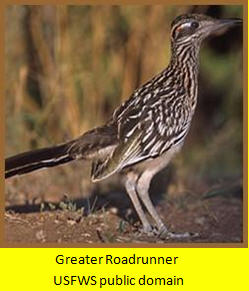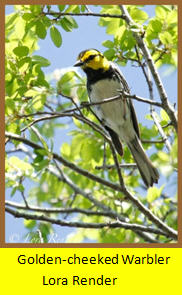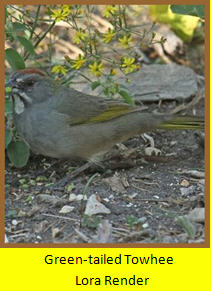Guide to SA Natural Areas & Greenway Trails
F. Area Birds
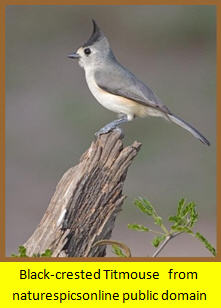

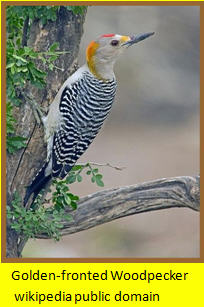
Alamo Area Master Naturalist Patricia (“Patsy”) Kuentz is this piece’s author.
Recent bird surveys of Phil Hardberger Park indicate that more than 100 species of birds are found in the park, many of them along the Oak Loop Trail. Although there is no guarantee that you will see any of these bird species on your visit (birds have wings, and they use them!), keep your eye out for some of the more common birds of the area.
LOOK FOR BIRDS IN THE SKY: VULTURES, CARACARAS, HAWKS, DOVES
Look skyward, and you might see soaring Turkey Vultures and Black Vultures. Occasionally, you may observe groups of three or four eating a dead animal on the ground. Although not as common, Northern Caracaras (called Mexican Eagles by some people) periodically patrol the park looking for carrion. (Because of its distinctive coloration, the Northern Caracara is sometimes mistaken for a Bald Eagle.) The vultures and caracaras are real public servants in helping keep our park clean.
What do you think would happen if there were no vultures to eat the carcasses of dead animals?
Red-shouldered Hawks frequent the skies of this area, too. White-winged Doves, whose call is sometimes thought to be similar to that of the Barred Owl, are also commonly seen flying in groups in the park. During migration periods, large aggregations of blackbirds such as Great-tailed Grackles can be visible from the Oak Loop Trail. Because this section of the park has no water source, ducks are not common here; however, you might get an occasional look at a group of Black-bellied Whistling-Ducks flying overhead between ponds near the park.
LOOK FOR BIRDS IN TREES: WOODPECKERS, CARDINALS, BLUE JAYS, TITMICE, WRENS & MOCKINGBIRDS
The many tree-level birds in Phil Hardberger Park include woodpeckers such as the Golden-fronted Woodpecker and Ladder-backed Woodpecker, whose undulating flight patterns are good identification clues. They are joined in this area by Northern Cardinals, Blue Jays, Carolina Wrens, Bewick’s Wrens, Lesser Goldfinches, Carolina Chickadees, and Black-crested Titmice. The Northern Mockingbird, our Texas state bird, is easily heard and usually seen on the Oak Loop Trail. Its various loud songs imitate those of other birds found locally.
LOOK FOR BIRDS ON THE GROUND: SPARROWS & ROADRUNNERS
As the plants in the park’s restored savanna reach maturity, keep an eye out for various sparrows, since they will enjoy the many seeds and insects that will be available there. Be sure to watch for motion in the path ahead of you. If you are quiet and very lucky, you might spot a Greater Roadrunner. This long-tailed, large bird streaked with gray could be trotting across the path in search of a tasty lizard.
So what is the best place to look for birds?
WINTER BIRDS: PHOEBES & WARBLERS
The park also has many winter bird visitors. One of the most common, the Eastern Phoebe, often flicks its tail up and down as a clue to identity. . With luck and a keen eye, one might even spy a visiting Green-tailed Towhee prowling around in the underbrush. Several warblers migrate through this area, but only a few, such as the Orange-crowned Warbler and the aptly named Yellow-rumped Warbler, routinely stay here for the winter. An exciting spring find would be an endangered Golden-cheeked Warbler migrating through Hardberger Park to its nesting area just to the north. In fact, realize on March 11, 2012 Park Naturalist Wendy Leonard observed and followed a Golden-cheeked Warbler in Phil Hardberger Park (East).
